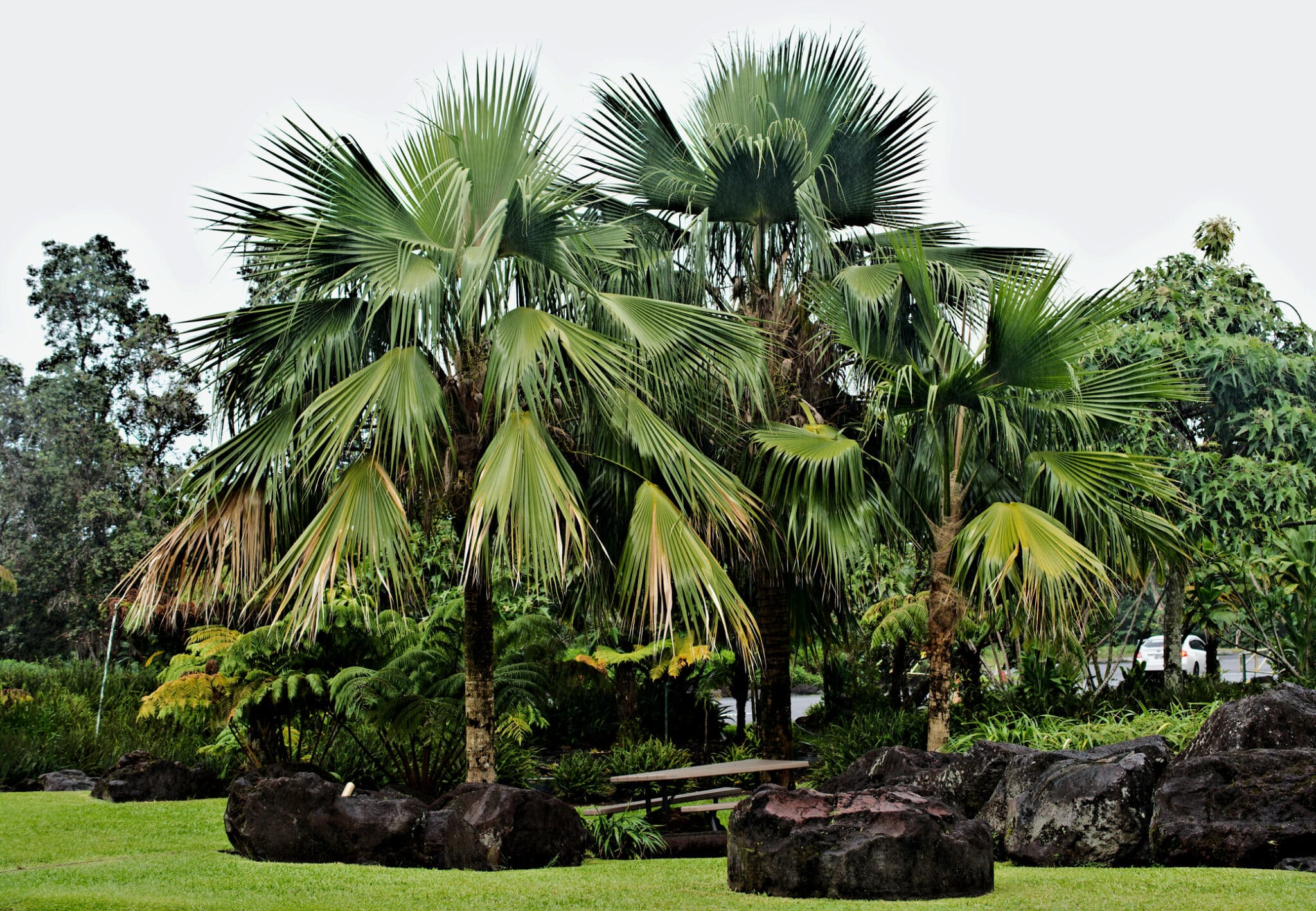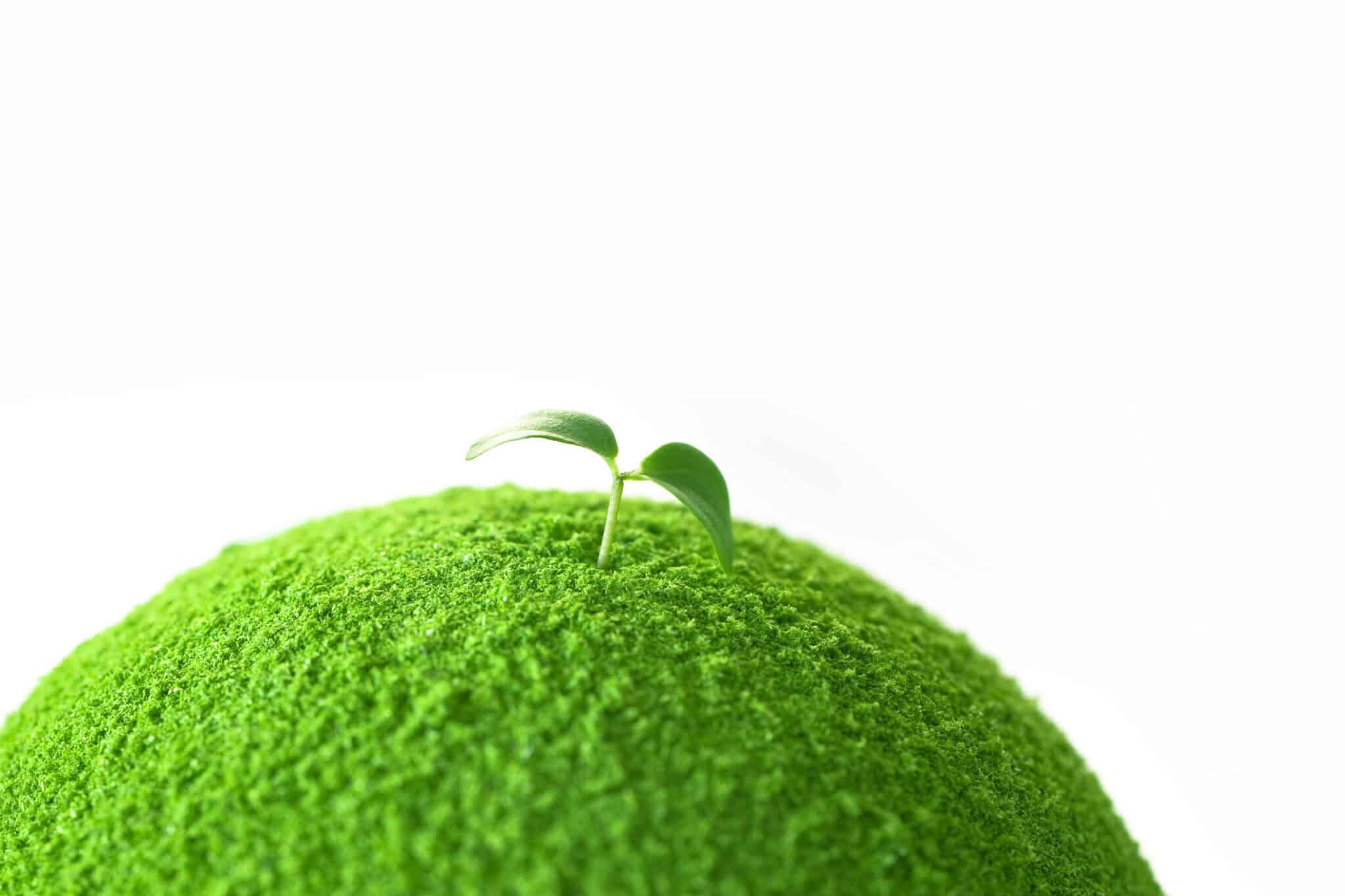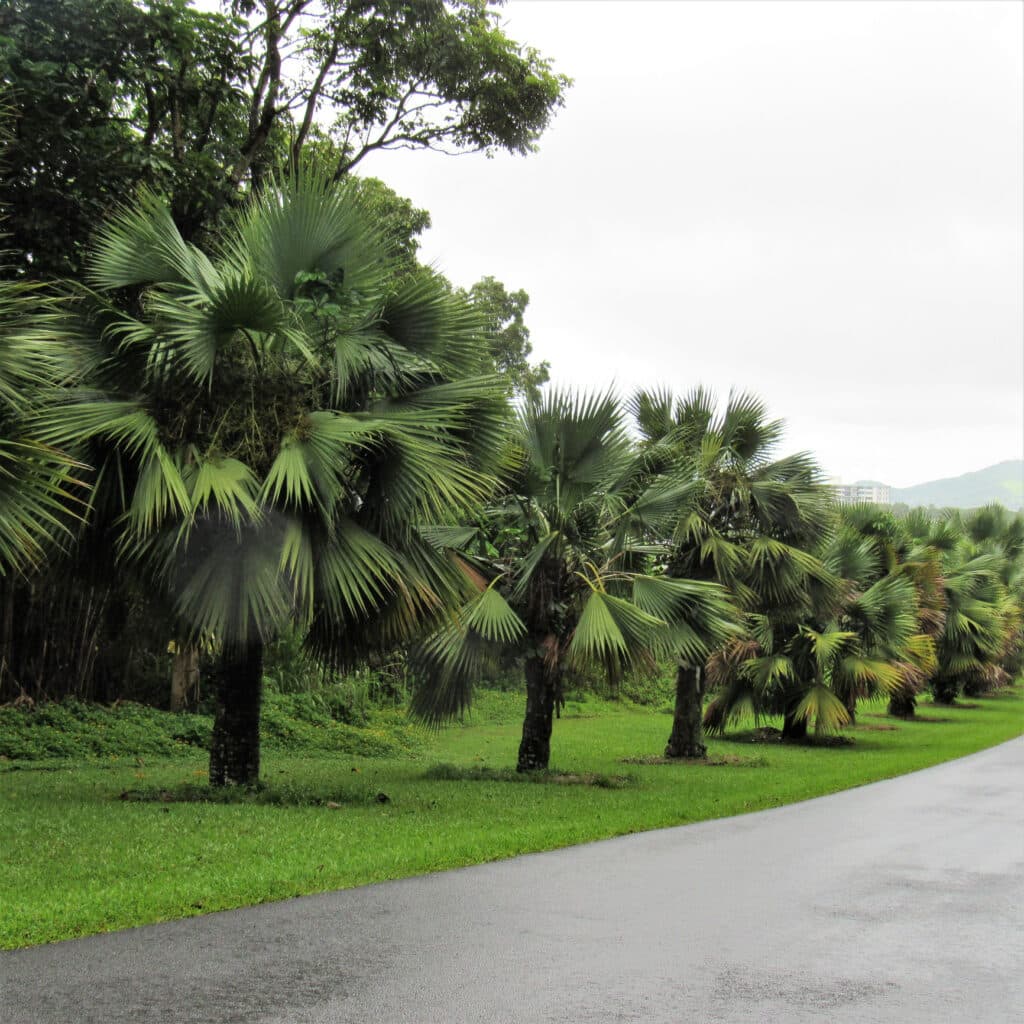In the lush setting of Hawai‘i, Pritchardia hillebrandii stands out as a remarkable native fan‐palm, prized for its distinctive foliage and endemic status. This palm has deep ties to Hawai‘i’s natural heritage, especially around places such as Honolulu and the island of Oʻahu where botanical collections and gardens celebrate it. Appreciating this species means acknowledging both its beauty and its vulnerability, as it is restricted in the wild and heavily valued in cultivation. By studying Pritchardia hillebrandii, gardeners in Hawai‘i and elsewhere can respect its origins, adapt its needs to local landscapes, and contribute to its conservation.
Pritchardia hillebrandii Details
Native to the Hawaiian island of Moloka‘i, Pritchardia hillebrandii is a medium-sized fan palm with silver-green leaves. It typically grows up to 20 feet tall, forming a slender trunk topped with a dense crown. The broad, palmate leaves have a silvery underside that shimmers beautifully in coastal sunlight. This palm produces small, black fruits and creamy flowers on drooping stalks.
In Honolulu and across O‘ahu, it’s often found in botanical gardens and public landscapes due to its striking appearance. Its moderate size makes it suitable for urban and residential planting without overwhelming smaller spaces. Despite its delicate look, the palm is wind- and salt-tolerant, ideal for coastal areas. However, it remains endangered in the wild and needs cultivation to help preserve its population.
The leaves of Pritchardia hillebrandii have a soft texture and fan outward symmetrically, enhancing its ornamental value. The tree is dioecious, with individual plants producing either male or female flowers, which adds interest for botanists. Its flowering season typically peaks in summer, with fruit maturing toward early fall. These features make the palm a favorite among local horticulturists and native plant enthusiasts.
In O‘ahu landscapes, it fits well in both modern and traditional Hawaiian designs. It thrives in full sun but can tolerate partial shade, especially in younger stages. This adaptability helps ensure successful growth when properly cared for. Gardeners appreciate that Pritchardia hillebrandii combines aesthetics with low maintenance.

Varieties and Cultivars
While Pritchardia hillebrandii itself is a distinct species, it belongs to a broader genus with over 25 Pritchardia varieties. Within this group, differences in leaf shape, size, and trunk thickness help distinguish species and cultivars. However, Pritchardia hillebrandii does not have named cultivars, as it is typically propagated from wild or garden-collected seed. Each seedling may show slight variation in color or growth rate due to genetic diversity.
On O‘ahu, enthusiasts often plant multiple Pritchardia species side by side for visual variety. Some gardeners compare Pritchardia hillebrandii with Pritchardia martii or Pritchardia remota, though their sizes and colors differ. These related species highlight the range within the genus but do not replace the unique elegance of Pritchardia hillebrandii. For collectors, it’s common to grow several Pritchardias to appreciate their subtle distinctions.
Although no official cultivars exist, careful selection can produce attractive specimens. Gardeners may choose seedlings with particularly silver leaf undersides or symmetrical crowns. With selective propagation, nurseries sometimes emphasize desirable traits, enhancing the palm’s visual impact. Still, all plants remain true to the original wild form.
In Honolulu’s landscape trade, Pritchardia hillebrandii remains a standout for its silver coloration and native heritage. Landscaping professionals value its consistency and unique appearance over cultivar diversity. Its rarity also makes it a prized addition in native Hawaiian plant collections. That authenticity makes each planting a step toward preserving local biodiversity.
Best Time to Plant
The best time to plant Pritchardia hillebrandii in Honolulu or elsewhere on O‘ahu is during the spring and early summer. Warmer temperatures and consistent rainfall help young palms establish roots more quickly. During this period, soil moisture remains stable, reducing transplant shock and encouraging healthy growth. Mild weather also allows seedlings to adjust gradually to sun exposure.
Planting during the wet season, typically from April to June, gives palms a head start before the drier months. Avoid planting in the late fall or winter when cooler nights can slow root development. While this palm is hardy, it thrives best when temperatures remain above 60°F consistently. Timing it right reduces maintenance needs during the critical early months.
If you’re transplanting from containers, spring ensures strong root establishment before intense summer heat. This transition period helps minimize water stress and leaf yellowing. New plantings also benefit from the longer daylight hours, supporting photosynthesis and new growth. Healthy root systems formed during this time provide long-term stability.
In Honolulu’s urban settings, late spring planting is ideal for both residential and commercial landscapes. On O‘ahu’s windward side, consistent rainfall offers natural irrigation during this season. The key is ensuring the soil stays moist but not waterlogged, especially for young palms. With proper timing, Pritchardia hillebrandii will adapt quickly and grow steadily year-round.
Growing Conditions
Pritchardia hillebrandii thrives in tropical climates like those found across Honolulu and coastal areas of O‘ahu. It prefers full sun exposure but can tolerate partial shade, especially during its early stages. Well-drained, sandy or loamy soil with good moisture retention suits it best. The palm does not tolerate prolonged soggy conditions, which may lead to root rot.
This palm adapts well to the warm temperatures typical of lowland Hawaiian regions. Ideal daytime temperatures range from 75°F to 85°F, with nighttime temperatures staying above 60°F. It also benefits from consistent airflow, making it ideal for breezy locations. However, protection from strong gusts helps young plants stay upright.
Humidity is essential for optimal leaf health, particularly in drier O‘ahu areas. Supplemental watering and misting can help during unusually dry months. While Pritchardia hillebrandii is drought-tolerant once established, young palms require steady moisture. A regular watering schedule is crucial during the first year.
Soil should be enriched with organic matter to support strong growth. Compost or aged mulch works well in both urban gardens and larger coastal plantings. In Honolulu’s residential landscapes, this palm performs best in slightly acidic to neutral pH conditions. With these elements in place, Pritchardia hillebrandii can thrive with minimal intervention.
Planting Instructions
Start by choosing a sunny location with good air circulation for planting Pritchardia hillebrandii. Dig a hole twice the width of the root ball and just as deep. This gives roots room to spread without sinking the plant too low. Gently remove the palm from its container, keeping the root ball intact.
Place the palm in the hole so the root crown sits level with the soil surface. Backfill with a mix of native soil and compost to improve nutrient availability. Lightly tamp the soil down and water thoroughly to remove air pockets. A shallow basin around the base helps retain water during initial watering.
Apply a two- to three-inch layer of mulch, keeping it a few inches away from the trunk. This regulates soil temperature and reduces moisture loss. In Honolulu’s warmer climate, mulch also prevents weed growth and protects surface roots. Reapply mulch as needed, especially during dry spells.
For the first month, water deeply every two to three days. After that, reduce watering frequency while ensuring the soil stays slightly moist. In O‘ahu’s rainy areas, you might skip watering altogether during wet weeks. With proper planting, Pritchardia hillebrandii quickly adapts to its new environment.
Care and Maintenance
Once established, Pritchardia hillebrandii requires only minimal care to thrive in Honolulu and other parts of O‘ahu. Regular watering during dry months helps maintain steady growth, especially in sandy soils. Water deeply once or twice a week to encourage deeper roots. Let the soil dry slightly between waterings to prevent fungal issues.
Fertilize every three months with a slow-release palm fertilizer rich in potassium and magnesium. This promotes strong frond development and vibrant leaf color. Avoid over-fertilizing, which can burn roots and damage new growth. Leaf tip yellowing often signals nutrient imbalance or water stress.
Prune only dead or damaged fronds, using clean tools to avoid introducing disease. Avoid cutting green fronds, as they still provide energy through photosynthesis. The palm self-cleans gradually, so pruning is typically minimal. Remove spent fruit stalks to reduce mess and redirect energy to growth.
Monitor for pests like spider mites or scale, especially in drier inland areas. Use horticultural oils or insecticidal soap if needed, focusing on the undersides of leaves. Regularly inspect the palm for signs of stress, including stunted growth or discoloration. With consistent care, Pritchardia hillebrandii will remain a healthy and beautiful focal point in the landscape.
Common Problems and Solutions
Though hardy, Pritchardia hillebrandii may face a few challenges in Honolulu and other parts of O‘ahu. One common issue is root rot caused by poorly drained soil or overwatering. To fix this, reduce irrigation and improve drainage with sand or organic matter. Avoid planting in low-lying areas where water tends to collect.
Another problem is yellowing leaves, often due to nutrient deficiencies, particularly potassium or magnesium. Applying a balanced palm fertilizer every three months usually corrects the issue. Regular mulching can also help retain nutrients and support overall soil health. Always check that fertilizer is formulated for tropical palms.
Insect pests like spider mites, mealybugs, and scale can occasionally infest young palms. These pests thrive in dry conditions and attack leaf undersides. Use insecticidal soap or neem oil sprays to control outbreaks early. Increasing humidity and rinsing leaves with water can also deter pests naturally.
Cold stress is rare in Honolulu but may affect young palms during sudden temperature drops or strong winter winds. To protect them, plant in sheltered areas or use fabric wraps when cold snaps occur. Overall, Pritchardia hillebrandii remains a low-maintenance choice if basic conditions are met and problems are addressed promptly.
Uses and Landscaping Tips
Pritchardia hillebrandii is widely used in Honolulu and across O‘ahu as a decorative focal point in tropical and native gardens. Its silvery-green foliage and symmetrical crown create an eye-catching contrast in mixed plantings. It fits beautifully in both formal landscapes and casual Hawaiian garden designs. Because of its moderate height, it won’t overwhelm residential spaces.
This palm works well in coastal plantings due to its salt tolerance. Plant it near patios, walkways, or entryways where its unique leaves can be appreciated up close. For a natural look, group it with other native species like hala or ti plants. In larger spaces, stagger several palms to create a lush tropical backdrop.
In Honolulu’s public spaces, it’s often featured in parkways, medians, and cultural gardens. Landscapers prize it for its tidy growth habit and minimal pruning needs. Its slow to moderate growth rate makes it ideal for long-term plantings with little disruption. The palm also provides light shade, which benefits understory plants.
Use Pritchardia hillebrandii to enhance biodiversity and promote a sense of place by honoring Hawaiian native flora. Combine it with lava rock, driftwood, or water features to accentuate its tropical appeal. Ensure it’s visible from gathering areas so its beauty can be enjoyed. With thoughtful placement, this palm brings both function and elegance to O‘ahu landscapes.
Propagation Methods
Pritchardia hillebrandii is most commonly propagated from seed, making it accessible to both home gardeners and professional growers across O‘ahu. Seeds should be collected from mature fruit when it turns black and falls easily from the tree. Clean the fruit thoroughly to remove the outer pulp before sowing. Fresh seeds germinate more reliably than older, dried ones.
Sow seeds in well-draining, sterile potting mix with good moisture retention. Keep the soil consistently moist but not soggy, and place the container in a warm, shaded area. In Honolulu’s climate, germination typically occurs within three to six weeks. Young seedlings benefit from dappled sunlight as they begin to grow.
Once seedlings have developed several true leaves, they can be transplanted into larger pots or directly into the ground. Choose a location with full sun and protect from wind during the early stages. Water regularly to support strong root development and steady growth. It may take several years before the palm reaches full height.
Although tissue culture is used for some palms, it’s not common for Pritchardia hillebrandii due to its slower growth rate. Seed propagation remains the most reliable and cost-effective method on O‘ahu. Gardeners can also share seeds to support native planting efforts across the islands. Through thoughtful propagation, this rare palm can be preserved and enjoyed for generations.

Environmental Impact and Benefits
Pritchardia hillebrandii plays an important role in supporting Hawai‘i’s native ecosystems, particularly when planted in residential or public gardens across O‘ahu. As a native species, it helps preserve genetic diversity and cultural heritage in urban landscapes. Its fruits offer food for native birds, while its canopy provides shelter and habitat. By planting this palm, residents help restore lost ecological connections.
In Honolulu, where urbanization continues to expand, integrating native plants like Pritchardia hillebrandii softens development’s environmental impact. It contributes to green infrastructure by stabilizing soil, managing runoff, and improving air quality. Its deep root system also helps reduce erosion in coastal and sloped areas. Every tree planted adds to the island’s overall sustainability.
This palm is non-invasive, which makes it ideal for conservation landscaping and habitat restoration projects. Unlike many imported species, it coexists peacefully with other native plants and doesn’t crowd out biodiversity. Landscapers and conservationists value its predictable growth and minimal maintenance requirements. It creates beauty while respecting the local ecosystem’s balance.
Beyond ecology, planting Pritchardia hillebrandii also offers cultural and educational value. It reminds residents and visitors alike of Hawai‘i’s unique flora and conservation challenges. When placed in schools, parks, or gardens, it sparks conversation about native plant protection. The palm is a living symbol of environmental stewardship on O‘ahu.
Conclusion
Pritchardia hillebrandii is more than a beautiful palm, it’s a symbol of Hawai‘i’s botanical heritage and environmental resilience. Native to the islands and cherished across O‘ahu and Honolulu, it offers both visual appeal and ecological value. With proper care, thoughtful planting, and community engagement, this rare species continues to thrive outside its native range. Its graceful presence enriches gardens, parks, and cultural landscapes alike.
From its silvery foliage to its salt tolerance, Pritchardia hillebrandii adapts well to tropical environments with minimal fuss. It supports biodiversity, enhances sustainability, and reflects the natural beauty of the Hawaiian islands. As more residents choose native species for landscaping, this palm gains new ground in restoring balance to altered environments.
By understanding its needs and promoting its propagation, gardeners help safeguard a piece of Hawai‘i’s living history. Whether used in residential designs or public installations, the palm stands as a quiet ambassador for native plant conservation. As a long-lived, low-maintenance tree, it rewards careful stewardship with years of beauty and purpose.
The journey of Pritchardia hillebrandii from endangered native to beloved ornamental is one of hope and responsibility. Planting and protecting it connects communities to land, culture, and nature. Its story invites residents and visitors alike to nurture and celebrate what makes Hawai‘i unique. With every palm, a legacy takes root.

